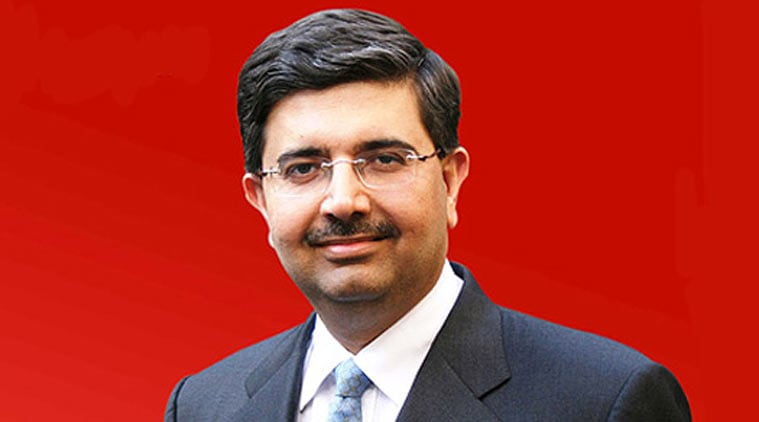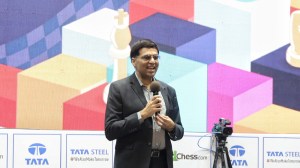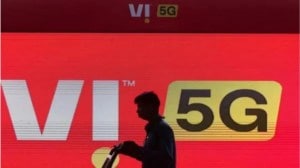Stay updated with the latest - Click here to follow us on Instagram
Don’t privatise banks, broad base shareholding below 50%: Kotak Mahindra chief
Kotak Mahindra group chief Uday Kotak says the time is opportune to build India, thanks to a very favourable commodity cycle.
 Uday Kotak
Uday Kotak
Kotak Mahindra group chief, Uday Kotak says the time is opportune to build India, thanks to a very favourable commodity cycle. What is needed now is a structural solution to Indian banking which moves beyond patchwork, Kotak said in an interview to SHAJI VIKRAMAN and GEORGE MATHEW.
Q. What are the changes you foresee in the banking industry here especially with the licensing of payment and small banks?
I believe everyone needs to be on their edge because if you’re complacent you are in trouble. Payment banks and others have challenges. It’s not an easy market but as a banker I am alert and I want to learn from what they will do. I’m pretty clear that they will make an impact but if an existing bank is alert and ready to change, there’s an opportunity. For financial services, it is essentially three things: transaction, risk and knowledge skill. Transaction is where the biggest competition will be there. Everyone wants to do transactions. That is where margins will be more under pressure. There is an attempt to commoditise risk also… through credit scoring, B2B lending, all that. I believe models are no substitute for risk. So good risk management will always be valuable in a bank. I am less worried about risk where good risk management will always have a say. On knowledge and skill, it’s like giving money between mutual fund and ETF. ETF is just formula. Among the three, most competition will be in transactions.
Q. One of the biggest challenges for the government and the regulator has been the huge pile of bad loans and cleaning up of balance sheets. How do you see this playing out?
The issue in Indian banking is our industry structure which still has 70 per cent state owned. That is a big challenge. There are a set of things which are the right things to do. There is a set of things which are difficult things to do. The right thing to do is too broad base public ownership of state-owned banks. Don’t privatise but issue new shares to the public and broad base the shareholding below 50 per cent. And over time as these banks raise capital, government ownership keeps on getting diluted. The issue is that if we do that it has to be combined with a very serious desire to fix governance. I don’t think its easy to get management change for 25 PSU banks. You can get it for five. For those five also you require the commitment from the highest office in India — do this for the country.
Q. The other worry is corporate leverage. Isn’t that still a big worry in the current context of low nominal GDP growth?
Corporate assets growth is of WPI. That means asset values are not increasing at all. And most of these leveraged companies are paying 12 per cent interest rate. Asset value is not growing and interest is accumulating at 12 per cent. What happens? In four or three and half years, your debt goes up 50 per cent. And your value has remained there only. So there is a bloating. Simultaneously, unfortunately… has there been a full recognition of the problem? For you are showing 100 plus interest as normal where the ability of leveraged corporate is not there.
Q. Do you see deleveraging by Indian corporates ?
If you look at the last 15 or 20 years, most of corporate India believed… inflate your way out. My assets… borrow money… inflation will be faster than the cost of money because real interest rates will be negative. And over time, the asset value will be more than the money that borrowed. That was the game… which is the new world. Grandfather days mean borrowing is more expensive than buying and buying out of borrowing is more expensive. That is what is happening. The challenge that we are finding in the Indian corporate sector is the cost of debt is growing faster than the value of the underlying assets. So with each growing day, the leverage that corporate India is not disposing of assets and continuing the leverage, the gap is getting larger. Delevaraging can happen in two ways: through operating cash flows and sale of assets. Now they (Indian promoters) are all trying to sell assets. They are trying to do it together. Now you have a market where everybody wants to sell. Who is the buyer? If you’re a buyer and ten people are coming to you, you will say ‘I will wait’.
Q. How do you see the issue of cleaning up of bank balance sheets being addressed?
We have to face the reality: bite the bullet. I genuinely believe that we need a structural solution to the Indian banking and the time has come for more fundamental solution. We should move beyond patchwork. My view is that a stressed asset fund should not be managed by the government. It can help. Assuming that you’re a bank and you have got problem assets, there’s an independently managed stressed asset fund. The bank is showing the asset at Rs 100. Stressed assets fund says it’s ready to buy at Rs 30. How are going to make the transfer? If you make it at Rs 30, who takes Rs 70. If you take Rs 70 hit, who is going to give capital. The government wants to keep 51 per cent. You can consider a stressed asset fund provided you have clear governance mechanism for Indian banking. If you dont do that in 5-7 years time we will back to the same problem.
There should be significantly empowered management team which more understands the new world. Second, much higher levels of risk management and ability to assess projects and the ability to say ‘no’. Today’s customer is a very demand customer. The customer doesn’t care what the problems of governance of PSU backs are. They will just move That’s the mindset change. There is an intent to have reform mindset. We also need to have significant dose of liberalisation.
Q. With banks in balance sheet repair mode and given the huge funding needs for infrastructure projects, are there other ways of looking at financing such projects ?
The question is all about risk management. We had IDBI, IFCI, UTI… my view is that it is about managing project risk. What happened is that lot of projects got conceived based on arbitrage. You had cheap resources and permanent availability of those resources at low prices, based on which projects were set up. That’s over. Now you will have to buy it at market prices. There’s very significant institutional waiting to invest in India. One of our investors is Canadian pension fund CPPI and various other pension funds looking to put long-term money into infrastructure. Therefore, one of the challenges is private sector promoter driven business model has challenges. A lot of promoters have run out of money. You need a professional model with bulk of the money backing that professional institution. Give those professionals small skin in the game and institutional money backing professional team, that is what I think is the future. You see that happening in technology all the time. So why not in infrastructure?
Q. What is the model you have in mind?
There are outstanding professionals in the country. These professionals do well everywhere in the world. Look at the biggest companies like Microsoft, this and that… Indian professionals are everywhere. Why can’t we build institutionaly backed model for high quality professionals to build infrastructure. Why do you need a lala? We do we need a promoter? Is it because of their ability to manage the political class? Is that a skill we need to have at all in the new era where are moving towards transparency, auctions, open architecture… Why do you need those skills? For example, there’s a distressed company today. A set of professionals backed by PE firms etc, support these professionals, and at a fair clearing price, buy out those stressed assets — either from a stressed fund or anywhere else. If an asset is worth Rs 30-200, at Rs 30 the deal should get done. Then the question is what happens to that bank? The government says I can’t manage 25 banks… I will make five winners and the rest I will make public or I will make them narrow banks. For a fundamental solution to the banking structure, the time has come. We need a substantive solution to India’s financial structure. First is the structure of banks and the ability to attract talent.. It’s capital, broad-based ownership and governance. You have to make it work. Along with broad-based ownership, the government must ensure governance. All these three need to be put in place. I see this as the single biggest challenge and opportunity for the financial sector. The time has come for us to redefine the structure of Indian finance.
Q. This government has been criticised for not delivering enough despite benefiting from the slide in oil prices.
The government has to be ready to take difficult calls. It has a very big advantage. Whats the big plus? God has been kind… oil. It looks like this is a sustainable advantage and oil doesn’t look going above $ 50 per barrel. We have benefited. Our oil import bill was $ 150 bn a year and it is probably down to $ 60-70 bn. Next year we will save $70-80 bn. Think of the country as a company. $ 80 bn into PE of 15 is how much. $ 1.2 trillion benefit for the country over 15 years. Huge benefit. This is the time India can take tough calls. This is our opportunity to say we don’t need a crisis to do things. We have got the benefit of a very favourable commodity cycle. This is the time to build India. All global commodities are cheap. Construction companies worldwide are empty and they don’t have work.
Q. What are the structural changes we need to carry out now?
I think there’s a marked improvement in terms of corruption. I don’t hear about corruption, especially at the highest levels. The system seems to have been cleaned up. I think that is a big plus. I think there’s much greater focus on the whole area of social action. I think we need to do more on execution. The other big plus is the foreign policy. India is on the centre stage of the world. A lot of things have fundamentally changed. But there are a lot of things which we can move faster. I genuinely believe that one of the key issue is if Indian economy grows faster, capacity in the financial sector is going to be one of the big challenges. Capacity building in the financial sector is essential to India’s economic growth. The structure of the financial sector is 70 per cent State and 30 per cent private, State owned institutions have challenges on their balance sheet. We need to address the capacity issue.
Q. How are you interpreting the latest data including the GDP numbers?
It is a very conceptual issue we are living through… For the first time in India, nominal GDP is lower than real GDP. Therefore real GDP is 7.3 per cent and nominal GDP is 6. In all my history, I can’t remember a situation like this. The standard Indian equation was 6:12… 6 per cent real GDP and 12 per cent nominal GDP. In real life what works is nominal GDP. India’s history of nominal GDP was 12-13 per cent. Day to day we live with nominal GDP and not real GDP. People say GDP is growing at 7 per cent… why are you not feeling it? GDP, instead of growing at 12 per cent, is at 6. How will you feel it? That’s whats happening. Its just amazing… if you go back for the reason for it, there’s huge divergence between WPI and CPI. The divergence is 9 per cent. Average WPI is -4 per cent and CPI is 5.5 per cent. The divergence between WPI and CPI is 9-9.5 per cent.
Q. What is your assessment of the level of corporate governance among listed Indian firms?
If you look at the capital market, they are speaking. There’s a big divergence among companies in the marketplace in terms of valuations. The weaker companies are not just able to raise capital. The marketplace is speaking out loud. That itself is part of the challenges and problems we have today.
Q. You have often voiced your concerns on the export of the Indian capital markets. Have your view changed?
One of the best things which happened in India is the shift of the inflation base of the CPI…. looking at the eyes of the saver. Once you look at it from the eyes of the saver and I’m going to have my interest rate above CPI.. This has led to a big boost in financial savings. One of the great outcomes of all the pain the country has gone through is finally financial savings is back. I am of the strong view savers have moved away from gold and real estate and they are back to financial savings. Mutual funds are seeing inflows, insurance is getting money and bank deposits are going up. You are seeing a flow of money into the financial sector. When you have real rates positive, you don’t make money in real estate. Gold has become less attractive. Savers have moved back to financial assets. Thats a very big plus. That will skill India’s ability to support financial savings to boost growth. If you look at the last 6 to 8 months, FIIs have been net sellers but the Indian market has not collapsed. That means Indian savings is building and its a very clear positive for India.
Q. State owned banks often complain about the fact that they are more weighed down by social sector schemes, mandated by the government – a mandate which private banks don’t have to worry about.
Why are they doing it? You get a mandate from somebody in Delhi so that I have to do it? The boards of those banks should apply their mind and decide what is best for them. The question is why we are still talking about financial inclusion even after so many years of public sector banking. We are in a physcial world… any number of bank branches. Digital will lead to faster inclusion than any number of branches across the country. More and more Indians are mobile active. Inclusion through digital is much more powerful way than anything else. Close to a billion Indians have mobiles. The poorest of the poor have mobile… so they can have a bank account. Financial inclusion is a catalyst for improving livelihood. People still need to improve livelihood which means more jobs. First you need some money in your pocket to put it in the bank.
Q. How does the proposed new Base rate based on marginal cost of funds look?
The sense I am getting is it is historical and there is a future. Future has to be on marginal based and historical can continue the way it’s. Thats fair. At some point of time, history will get over and we will move to marginal. They (RBI) have also made one thing clear. If the banks lend at external benchmark, it does not need to follow marginal cost of lending. RBI has actually opened up that window. Of course we will look at benchmarks like MIBOR or something like Treasury Bills or government securities. Some of the things like high interest rate on small savings schemes distort the benchmak. I am waiting for the government to lower the small savings rate.







